Complimentary worldwide shipping on orders over $400 · No import tariffs for most countries
Complimentary worldwide shipping on orders over $400 · No import tariffs for most countries
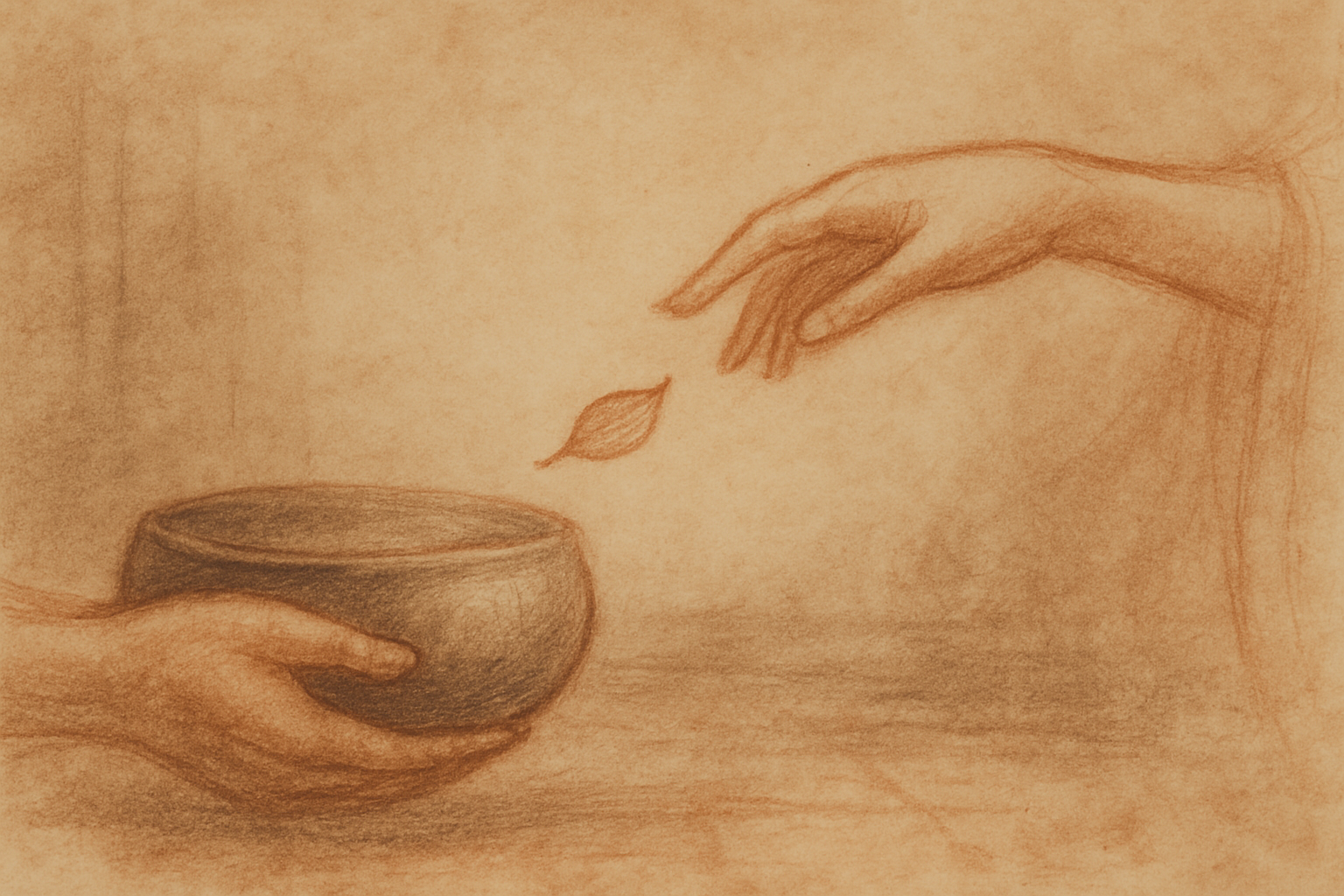
When the Monk Sang to the Moonlight
Where silence was once a vow,
a song became the wound.
In the time when prayers still hung in the air like morning incense, and the scent of lotus clung to the river’s breath, there lived a boy whose voice could still the wind.
His name was Tum.
Born beneath a banyan’s shadow and given to the monastery in infancy, he was said to have been chosen by spirits before he could walk. The elders called him quiet, but it was not the quiet of emptiness—it was the hush before dawn, the stillness before sacred flame. When Tum chanted the Dharma, the rains themselves listened. When he sang the jataka, birds stilled their wings mid-flight, and old women wept with memories they did not know they carried.
Even the abbot—stooped and weathered like a broken stupa—once murmured that Tum’s voice bore the fragrance of a previous life.
But within him stirred a hunger—not of the belly, but of the soul. A yearning that does not come often into the world. The kind that could bless a kingdom or unravel it.
It was the hunger for love.
One season, Tum was summoned to Kampong Cham to offer chants before the governor’s court. Beneath jasmine smoke and lamp-lit walls, he first beheld her.
Teav.
Daughter of a noble merchant, she moved like a prayer whispered into moonlight. Her beauty could not be carved—too fluid for stone, too alive for pigment. And when her eyes met his, just once, something ancient stirred between them. A silence that recognised itself.
That night, Tum sang as if the stars had torn a hole through his chest.

That night, she placed a single lotus petal in his alms bowl.
And thus began the vow.
They met beneath the old stupa’s curve, hidden by shadow and fate. He brought verses. She brought silence. Together, they bloomed.
Their love was fire and water, wind and stone—blessed, forbidden, eternal.
Each touch was a vow. Each meeting pulled him further from the robe, not by defiance, but by devotion. He could feel it unravel—thread by thread—not his garment, but his karma.
So he chose.
Tum laid his saffron robe upon the monastery floor. He wept, but did not turn back. As the bells tolled their quiet disapproval, he walked barefoot to her family’s gate and, with all the grace his heart could carry, asked for her hand.
But the world does not bow to love when love walks outside its place.
The governor’s men saw only offence: a low-born, robe-forsaken monk daring to reach beyond his station. Whispers turned to warnings. Warnings turned to judgement. And judgement came like a blade made of silence.
Tum was seized. A forged decree condemned him. No trial. No farewell.
They killed him in the courtyard of Teav’s house—beneath the frangipani tree where their fingers first touched.

She was not allowed to hold him.
When the news reached Teav, she did not weep. She did not cry out. For three days, she neither ate nor spoke, her eyes dry as ruined wells. Then, before dawn, she walked barefoot to the old bodhi tree where Tum had once whispered, “Even in death, I will wait.”
There, she lay down her sorrow like a robe.
Some say she drank poison. Some say she sang her soul into the forest of ghosts. Others say the earth opened like a mother and gathered her home.
But the tale does not end there.
Even now, when moonlight spills across the steps of Kampong Cham, some swear they have seen them—two silent figures walking hand in hand. A monk whose eyes hold starlight. A girl whose hair falls like flowing water.
Sometimes, he hums a chant that no one remembers, and the air grows still.
Sometimes, when no wind stirs, a single lotus petal falls.

And so love became a prayer too luminous for this world to hold—
but not too far for the stars to remember.
Also in Library
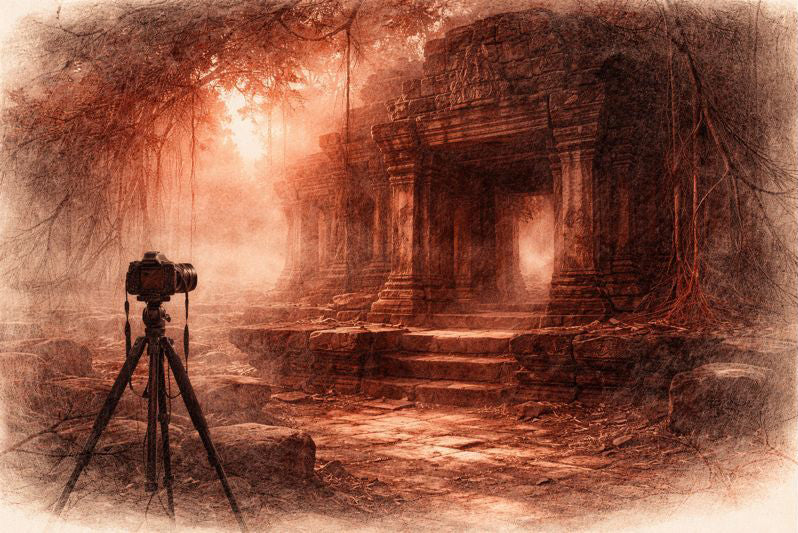
Before the Shutter Falls
3 min read
Before the shutter falls, fear sharpens and doubt measures the cost of waiting. In the quiet hours before dawn, the act of not-yet-beginning becomes a discipline of attention. This essay reflects on patience, restraint, and the quiet mercy that arrives when outcome loosens its hold.
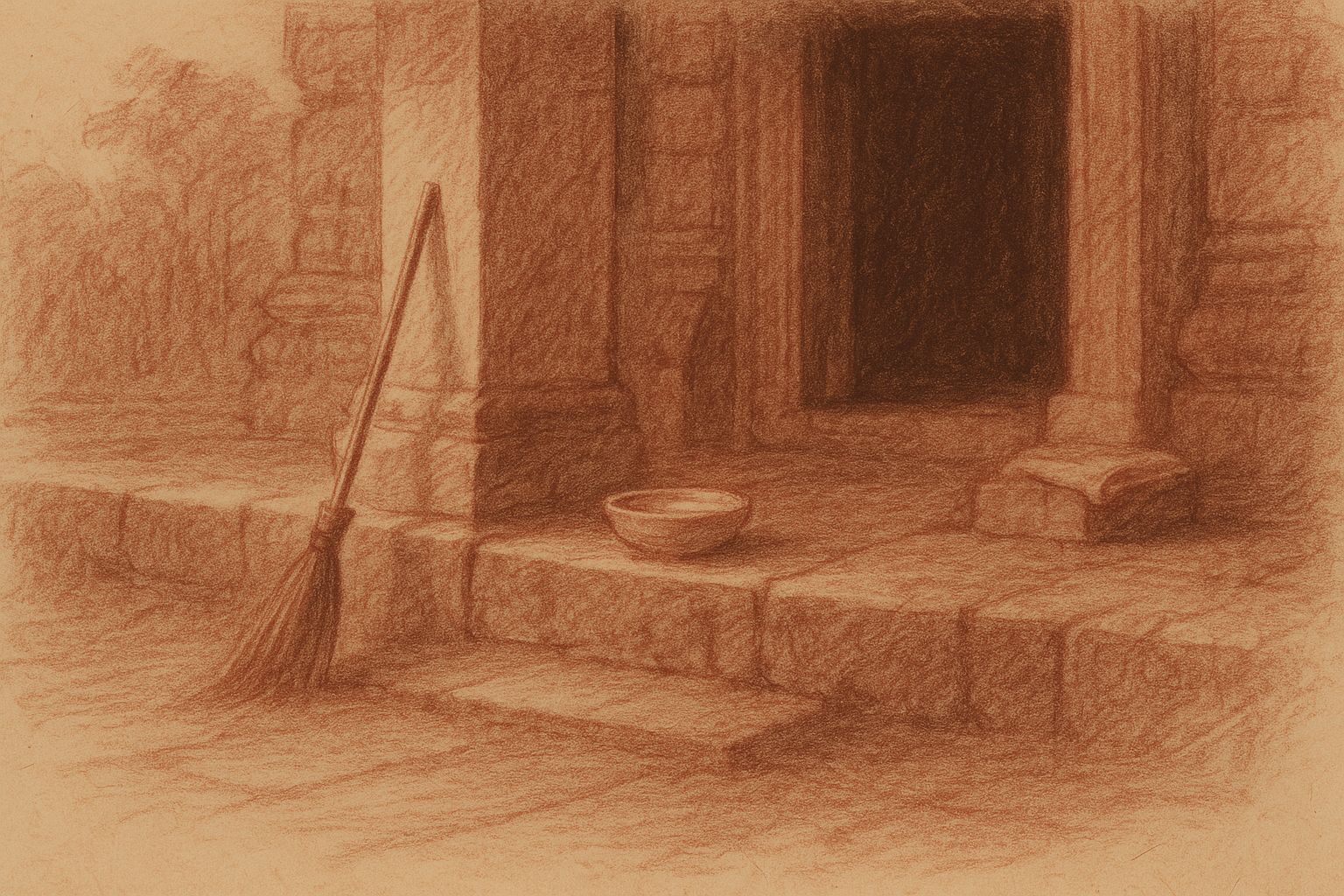
Those Who Keep the Way Open — On the Quiet Guardians of Angkor’s Thresholds
3 min read
Quiet gestures shape the way into Angkor — a swept stone, a refilled bowl, a hand steadying a guardian lion. This essay reflects on the unseen custodians whose daily care keeps the thresholds open, revealing how sacredness endures not through stone alone, but through those who tend its meaning.
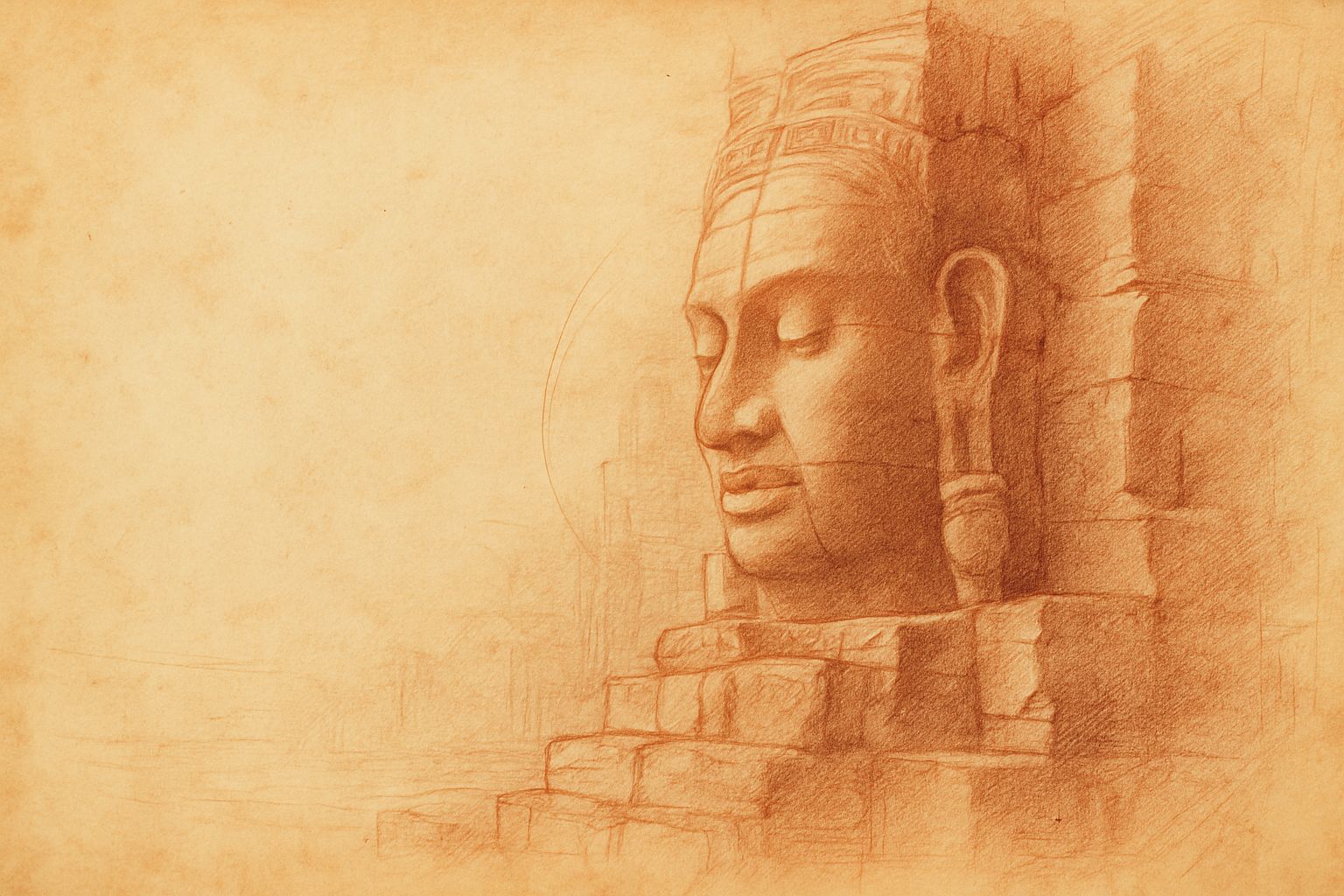
Multiplicity and Mercy — The Face Towers of Jayavarman VII
5 min read
A new vision of kingship rises at the Bayon: serene faces turned to every horizon, shaping a world where authority is expressed as care. Moving through the terraces, one enters a field of steady, compassionate presence — a landscape where stone, light, and time teach through quiet attention.
Join My Studio Journal
Receive occasional letters from my studio in Siem Reap—offering a glimpse into my creative process, early access to new fine art prints, field notes from the temples of Angkor, exhibition announcements, and reflections on beauty, impermanence, and the spirit of place.
No noise. No clutter. Just quiet inspiration, delivered gently.
Subscribe and stay connected to the unfolding story.
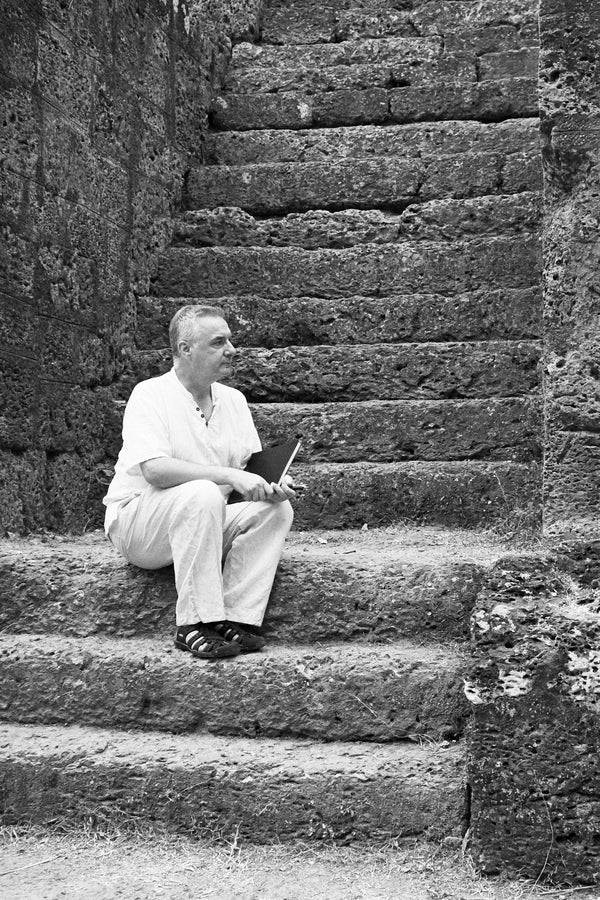
Join My Studio Journal
Receive occasional letters from my studio in Siem Reap—offering a glimpse into my creative process, early access to new fine art prints, field notes from the temples of Angkor, exhibition announcements, and reflections on beauty, impermanence, and the spirit of place.
No noise. No clutter. Just quiet inspiration, delivered gently.
Subscribe and stay connected to the unfolding story.
